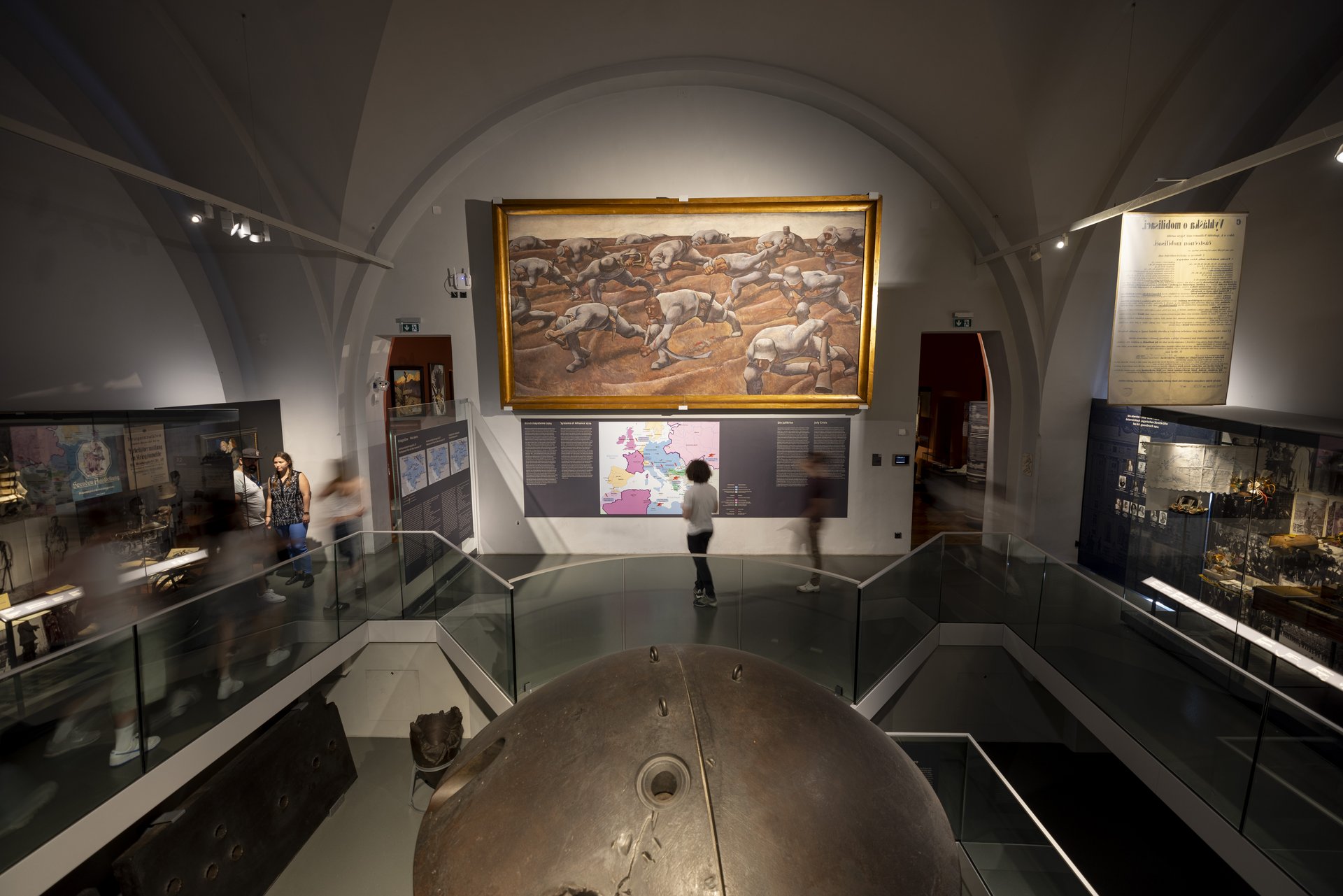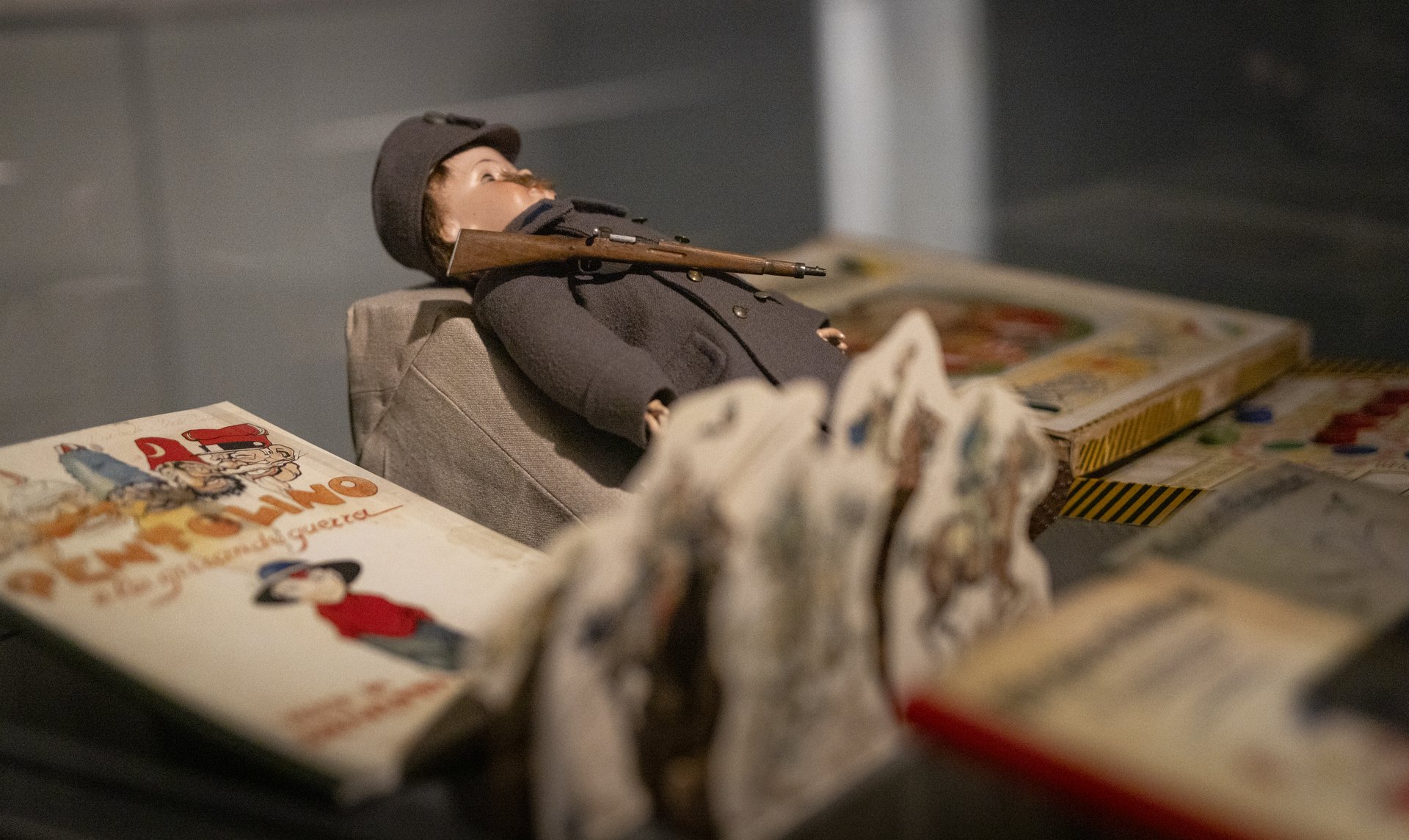The First World War 1914 - 1918
Download: The First World War 1914 - 1918
On 28 June 1914, the Austro-Hungarian heir apparent Franz Ferdinand and his wife Sophie were shot dead by a young Bosnian-Serbian nationalist. Political decision-makers were convinced that the only way to ensure the continued existence of the Habsburg Monarchy was starting a local war against Serbia. Austria-Hungary saw the assassination as an element of Serbian policy pursued for years: separating Bosnia and Herzegovina and even other southern Slavic territories from the Habsburg Monarchy. Serbian government was held responsible for the assassination.
Austria-Hungary declares war on Serbia
An ultimatum with demands too harsh to be met was intended to start a local war in order to eliminate by military means the threat posed by Serbia. Belgrade relied on Russia's willingness to enter the war on Serbia's side and rejected some of the ultimatum's demands. The planned local conflict in the Balkans, finally triggered by the Austro-Hungarian declaration of war on 28 July 1914, within a week had escalated into a European (and soon after a world) war due to deep mutual mistrust among European states, a polarised alliance system and military requirements of the respective mobilisation plans.
Central Powers versus Entente
Austria-Hungary, the German Empire and the Ottoman Empire (from autumn 1914) stood as "Central Powers" against “the Entente” states of Russia, France, Great Britain, Serbia and the initially neutral Belgium.
The many theatres of the First World War
All initial offensive plans of all states failed. German troops marched into Belgium on 4 August 1914 and then advanced into France. However, the German Empire did not succeed in quickly defeating France. Austria-Hungary also was unable to defeat Serbia. In Galicia, it was barely able to hold off the Russian offensive and suffered heavy losses. Repeated counter-attacks against Russia led to an enormous number of dead and wounded, but were unsuccessful.
It was only after the battle of Gorlice-Tarnów in May 1915 that German and Austro-Hungarian troops were able to stabilise the Russian front. Almost simultaneously, Italy, aiming to annex Italian-speaking territories and other parts of the Habsburg Monarchy's Adriatic coastline, declared war although it had officially been an ally until April 1915. The opening of this new front in the south-west, which stretched from the Gorizia region to the mountains of South Tyrol, placed Austria-Hungary in a difficult strategic situation.
War of resources
The First World War was not limited to the frontlines. It was a war pitting industries against each other and food supply in particular was of constant concern – every citizen could feel the consequences of the war literally on their own bodies.
The Italian and Russian theatres of war
At the end of 1915, Serbia was defeated in a fourth offensive in which German and Bulgarian troops also took part. Austro-Hungarian troops forced Montenegro to surrender at the beginning of 1916 and then entered Albania, where Italian troops had already established themselves.
In May 1916, Austria-Hungary failed to defeat Italy with an offensive from South Tyrol. On the Isonzo River, nine Italian offensives from 1915 until the end of 1916 could only be repelled with difficulty. In the east, the Russian “Brussilov offensive” and Romania's entry into the war on the side of the Entente once again led to an existential crisis for the Habsburg Monarchy. However, in the same year, German, Austro-Hungarian, Bulgarian and Ottoman troops succeeded in occupying large parts of Romania and stabilising the front against Russia.
In 1917, the Russian army began to disintegrate due to internal political problems, and the October Revolution triggered events that led to peace agreements between the Central Powers and (Soviet) Russia, Ukraine and Romania.
Optimism for the Central Powers
On the South-West Front, a joint German-Austro-Hungarian offensive brought Italy to the brink of military collapse in the “12th Isonzo Battle”. As the German army simultaneously had repelled massive offensive operations on the Western Front, the military situation for the Central Powers at the beginning of 1918 seemed promising.
Food crises, strikes and mutinies
The favourable military situation obscured the increasingly chaotic internal conditions in the German Empire and especially in Austria-Hungary. The food crisis reached catastrophic proportions in 1918. Austria-Hungary, already struggling with major nationality problems in peacetime, was increasingly threatened by disintegration. After the death of Emperor Franz Joseph in November 1916, his successor Emperor Karl I (1887 - 1922) tried unsuccessfully to reach a peace agreement. In 1918, strikes and mutinies broke out within the Austro-Hungarian Empire.
The USA enter the war
In the course of 1918, the USA's entry into the war, triggered by German submarine warfare in 1917, began to have an impact on the battlefield. By August 1918, 1.3 million US soldiers had arrived in Europe. In spring 1918, both the last major German offensives in France and those of the Austro-Hungarian forces on the Piave River failed. This was the last attempt to force a military decision in favour of the Central Powers.
Dissolution of the Habsburg Monarchy
In autumn 1918, the dissolution of the Habsburg Monarchy could no longer be prevented. On 3 November 1918, representatives of Austria-Hungary signed an armistice in Villa Giusti near Padua. By this time, national successor states had already been formed on the territory of the Habsburg Monarchy. Europe had changed.








